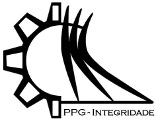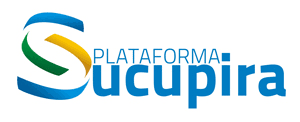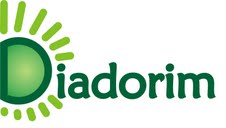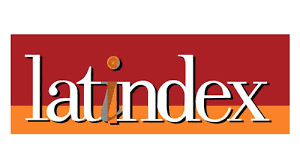ANÁLISE NUMÉRICA E EXPERIMENTAL DE UM PROTÓTIPO DE PÁ DE TURBINA EÓLICA
DOI:
https://doi.org/10.26512/ripe.v2i35.21434Keywords:
Pá de turbina. Análise modal. Experimental. Numérico. Viga Timoshenko.Abstract
A energia eólica, como opção alternativa para a produção de eletricidade, vêm tomando espaço nos últimos anos. As turbinas eólicas são compostas de pás e geradores. As pás de uma turbina, além de estarem sujeitas a forças de natureza diversas, vibram de forma contínua. O presente trabalho propõe a análise numérica e experimental de uma pá de turbina eólica para a obtenção de parâmetros dinâmicos. A modelagem numérica é feita utilizando elemento de viga Timoshenko de seis graus de liberdade por nó, e conduzida utilizando a ferramenta de elementos finitos ANSYS. Desta forma, pretende-se avaliar os resultados numéricos e experimentais e através de uma análise comparativa atestar a modelagem feita com uso da ferramenta computacional ANSYS.
References
Whiteman, A., Rinke, T., Esparrago, J. & Elsayed, S. 2016. Renewable Capacity Statistics 2016. IRENA International Renewable Energy Agency. Disponível em: . Acesso em: 15 de Lulho de 2016.
Perim, A. Braga, B., Godoi, G., Ribeiro, I., Cascalho, J., Duarte, J. & Trabuco, J. 2015. Boletim Mensal de Monitoramento do Sistema Elétrico Brasileiro Novembro - 2015. Ministério de Minas e Energia. Disponível em: . Acesso em: 15 de Julho de 2016
Hinrichs, R., Kleinbach, M. & Reis, B. 2010. Energia e Meio Ambiente. São Paulo: Cengage Learning.
Capuzzi, M., Pirrera, A. & Weaver, P. 2015. Structural design of a novel aeroelastically tailored Wind turbine blade. Thin-Walled structures. Vol. 95, pp 7-15.
Bechly, M. & Clausen, P. 1995. Structural design of a composite wind turbine blade using finite element analysis. Computers & Structures. Vol. 63, n. 3, pp. 639-646.
Wang, Y., Liang, M. & Xiang, J. 2014. Damage detection method for wind turbine blades based on dynamics analysis and mode shape difference curvature information. Mechanical Systems And Signal Processing. Vol. 48, pp. 351-367.
Low, A. 2012. Identificação experimental modal da caixa acústica de um violão clássico. Dissertação, Universidade Federal do Rio Grande do Sul/Porto Alegre.
Ewins, D. J. 1984. Modal Testing: Theory and Praice. John Wiley & Sons, London.
Larsen, G., Hansen, M., Baumgart, A. & Carlén, I. 2002. Modal Analysis of Wind Turbine Blades. Riso National Laboratory, Roskilde.
Araújo, D., Morais, M., Ávila, S. & Shzu, M., 2014. Análise Modal de uma Pá de Turbina Modelada como Elemento de Viga utilizando a plataforma ANSYS. Revista Interdisciplinar de Pesquisa em Engenharia - RIPE.
Prazzo, C. 2011. Análise modal de uma estrutura do tipo viga utilizando materiais piezelétricos (PVDF) como sensores. Dissertação, Universidade Estadual Paulista/Ilha Solteira.
Meirovitch, L. 1967. Analytical Methods in Vibrations. Macmillan. New York.
Rao, S., 2008. Vibrações mecânicas. Pearson Prentice Hall. 4 ed. São Paulo.
Kreyszig, E. 1993. Advanced Engineering Mathematics. Willey, New York.
O Gata, K. 2003. Engenhari de controle moderno. Pratice Hall. 4 ed. Rio de Janeiro.
Maia, M. & Silva, M. 2001. Modal analysis identificaion techniques. Philosophical Transactions of Royal Society. Vol. 359, pp. 29-44.
Kloutsey, A., Diniz, A. & Villa, C. 2006. Influência das condições de contorno na análise modal experimental de vigas. 16th Simpósio de Pós-Graduação em Engenharia Mecânica. Universidade Federal de Uberlândia/Uberlândia.
Kouroussis, G. Fekih, B., Conti, C. & Verlinden, O. 2012. EasyMod: A Matlab/Scilab toolbox for teaching modal analysis. 19th International Congress on Sound and Vibration. Proceedings of the 19th International Congress on Sound and Vibration. Vinius, Lithuania.
Downloads
Published
Issue
Section
License
Given the public access policy of the journal, the use of the published texts is free, with the obligation of recognizing the original authorship and the first publication in this journal. The authors of the published contributions are entirely and exclusively responsible for their contents.
1. The authors authorize the publication of the article in this journal.
2. The authors guarantee that the contribution is original, and take full responsibility for its content in case of impugnation by third parties.
3. The authors guarantee that the contribution is not under evaluation in another journal.
4. The authors keep the copyright and convey to the journal the right of first publication, the work being licensed under a Creative Commons Attribution License-BY.
5. The authors are allowed and stimulated to publicize and distribute their work on-line after the publication in the journal.
6. The authors of the approved works authorize the journal to distribute their content, after publication, for reproduction in content indexes, virtual libraries and similars.
7. The editors reserve the right to make adjustments to the text and to adequate the article to the editorial rules of the journal.









